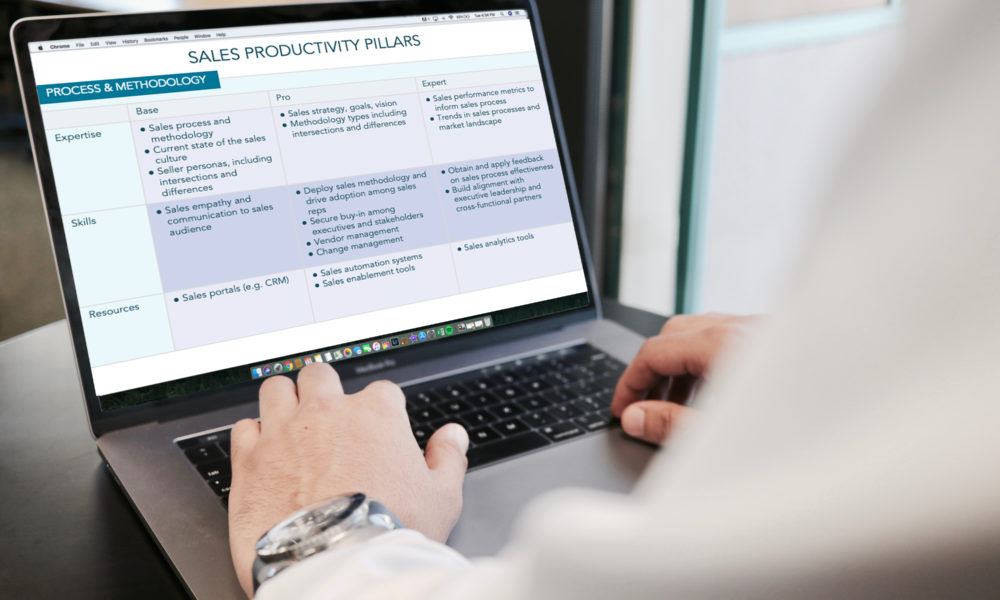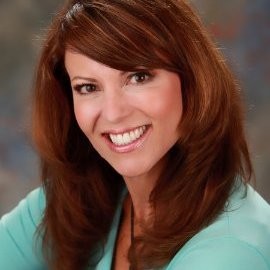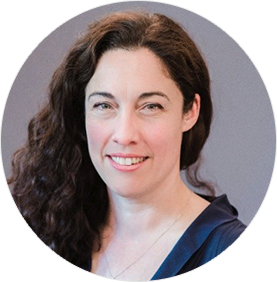Episode 76: Jessica Ryker on Aligning with Business Goals to Drive Sales Productivity
3.2K Views | 13 Min Read
Shawnna Sumaoang: Hi, and welcome to the Sales Enablement PRO podcast. I’m Shawnna Sumaoang. Sales enablement is a constantly evolving space, and we’re here to help professionals stay up to date on the latest trends and best practices so they can be more effective in their jobs.
Today, I’m excited to have Jessica from HelpSystems join us. Jessica, I’d love for you to introduce yourself, your title, and your organization to our audience.
Jessica Ryker: Of course. I’m Jessica Ryker. I’m the sales enablement lead at HelpSystems. We are an IT management software sales company, specifically focusing on the areas of cybersecurity and automation.
SS: I’m so excited to have you join us today, Jessica. Given your unique background as an attorney, I would love for you to explain to our audience how that experience has influenced your approach to sales enablement.
JR: Of course. Being an attorney is, as you can imagine, something that requires you to think of any problem or any situation from both the highest strategic levels down to executing on the most tactical. I take my attorney background as the most useful experience to get me up and running in that sort of field.
So, when in sales enablement, we sit down and we try to tackle big, hairy problems, we’re able to not only think from the highest level about what matters most down to executing, all the little things that need to be done to solve for that problem. The way I think about it is how do we want our sales process to work all the way down to a specific individual job aid that will help a rep do their jobs. That kind of organizational project management has also been incredibly helpful.
And the last part is just staying curious. You don’t know everything. You can’t know everything. So, making sure that you ask lots of questions and understand something fully before you decide what the right answer should be.
SS: I love that. And one of those big initiatives you actually recently mentioned in an article that you were featured in – you talked about the importance of alignment, specifically in regard to business goals. I would love for you to talk to our audience around why it’s important for sales enablement to align its work to the goals that the executive leaders have for the business.
JR: Sure. Alignment is important for sales enablement, not only for effectiveness and impact, but also for visibility. Oftentimes reps feel like they’re being pulled in a lot of directions, and there isn’t always a clear directive from the top-down and from each department. So, when you speak the same language as their sales leader, your company’s CEO, customer, and sales operations, services, your initiatives are much more likely to stick because the rep has heard it before. They understand what the initiative is and what everyone is shooting toward.
So, let’s say your organization is prioritizing cross-selling products outside of your traditional product bag. If sales enablement is also focused on making it easier for you to do that job, your impact in sales enablement will be greater. Your goals will be easier to achieve because you’re working in parallel with everyone else at the business. So, when I sit down with my CEO, I want to be able to demonstrate how my goals and my work helped her to achieve her own. I mean, as cheesy as it sounds, we all win when we all win. If I can demonstrate to her that what I do helps her in that way and help sales meet their goals, my visibility increases and the impact increases as well.
SS: Absolutely. And I think the other way in which sales enablement has an impact is just its expansive reach beyond just the sales organization. Oftentimes, sales enablement partners with a lot of functions across the org. How can sales enablement work better with some of its core partners in some of the functional areas that they might not be as familiar with, such as the legal teams or maybe a few others that you work with at HelpSystems?
JR: Sure. Sales enablement rarely can do anything on its own. I rely every single day on others to get the work done in particular because I’m a solo enablement practitioner at my company. As I mentioned before, it’s always best to understand each of your partner’s goals and what priorities they’re chasing.
So, for example, I know my services team is focused on ensuring that their statements of work are drafted appropriately so that they can be executed well. Post-sales wants to ensure that services doesn’t slow down their potential sales while also securing the revenue that services provides.
There’s significant overlap there to work with. And if I were to try approaching that situation only from a sales perspective, the solution wouldn’t stick. If your partners believe that you care about their goals as much as your own, you’ll have much better success. And you know, another great example of this is I am not a technologically savvy person. So, anytime I have to think about sales technology or come up with the next best way to optimize our tech stack, I partner and work very closely with our IT department to ensure that I’m not leaving any stone unturned, that we’ve taken into consideration all of the potential side effects that any tool could bring.
It’s ensuring that you’re not making others’ lives harder. And whatever solutions you come to the table with, you’ve considered everyone else’s perspective. That’ll help ensure that, again, even with folks that you don’t work with often, that you’re better able to provide the solutions that are necessary.
SS: I think another great way to ensure that the org stays aligned is by way of the structure of goals. So, what are some of the core goals that you have for the sales enablement function at HelpSystems?
JR: Well, this year, my core goals for sales enablement are to improve our forecasting accuracy, improve sales productivity, enable cross-selling, and improve our CRM experience.
And the reason those are my goals is because they aligned directly to the business’s goals. So, I look at what we call our DSO, which is our “desired superior outcome.” Essentially, where do we want to be in the next four to five years? And I think about the business’ 2020 goals as well. And I think, what do we need to do in sales enablement to ensure that we’re able to achieve those goals? How am I participating in a way that helps us all reach those targets?
We have a very heady revenue target to hit within the next few years. So, what can we do based on the specific issues we have right now to ensure that we can still achieve that goal? These are the core goals that we’ve come up with to help us meet all of those larger priorities that the business has.
SS: I think that’s fantastic. Now, if you don’t mind, I’d love to kind of drill into one of the goals that you had brought up. You mentioned one of the priorities for sales enablement is to help boost sales productivity. I’d love for you to give our audience tips and tricks into how you’re actually tackling that.
JR: Sure. So, I define sales productivity as efficiency times effectiveness. In other words, how can we reallocate the effort that’s being made by our sales folks currently to more useful activity as well as improve that salesperson’s capabilities? So, it’s removing those roadblocks that suck time or are redundant and redirect them to better work. How can we also improve the work that they are doing? Those optimal activities we want them chasing.
So, at the end of last year at HelpSystems, I conducted ride-alongs and sent out a sales survey to try and better understand what those productivity roadblocks are for our teams. And what I learned has driven the structure also of my 2020 goals. There are quite a few initiatives that I’ve got going on this front. For example, when we talk about improving the CRM experience, that includes streamlining our sales process, removing redundancies, and opportunity management and activity logging. Reinforcing a culture of “always be updating” to ensure that our data integrity is as high as it can be.
And of course, our next big project is layering in sales methodology into our workflow so that each step in the sales process and each sales stage is moving through the customer’s buying process as quickly and efficiently as possible. I’m also working closely with our marketing team on content management, specifically creating that one-stop-shop for all sales resources, including job aids, collateral best practices, those gold star video recordings of really excellent customer calls, things like that.
So, when we talk about productivity, it’s really targeted to the information that I have on what is getting in the way of people being proactive or being productive today. And then how can we improve on the activities that we want sales to be able to chase. So, those are a few examples of how I’m tackling that this year.
SS: I think that’s fantastic. And I know that there are a lot of sales enablement professionals out there that are looking at the same type of initiative for the upcoming year. So, I think that answer was super helpful for our audience. Now, Jessica, in closing, I would kind of love to round out this conversation. This is the last question, but I’d love to hear how you are measuring progress on your sales enablement goals and how are you demonstrating what success looks like, especially up into your executive leadership team?
JR: So, this is always the hardest question to answer because some of how I define success is also how we measure productivity improvement. You can use metrics like MQL conversion rates over time, how many total deals a rep has, plus the time it takes to close them over time, which is something we’re working to improve. The amount of time that is spent on deals that are eventually lost and trying to reduce that, the number of opportunities at each stage over time to try and keep that funnel as full as possible.
So, those are some of the metrics that we can look to for productivity in addition to just how many clicks it takes to accomplish a job within CRM, for example. And some of how success is defined will also come after the year-end survey this year as compared to last year’s. I started in sales enablement at this company in September, and that was the first enablement role that they had. So, we are kind of getting a baseline right now and hoping to get a much better sense of the full impact and be able to see what success looked like at the end of the year.
However, as I’ve mentioned throughout this as well, is much of how sales enablement is measured is tied to how my overall business achieved its goals. As I mentioned, one of my goals is cross-sell enablement because one of HelpSystems’ goals is to boost their cross-sell numbers across each sales team and geography. So, if we see increased numbers, that’s another indication that the work we’re doing is making an impact. I say I succeed if they do, because each of my initiatives is tailored to drive toward those numbers increasing. So, that’s another way that I’m also looking to measure the impact that we have and really figure out how we define success. But it’s always a moving target. Deciding how to measure sales enablement is always going to be a challenge, but one that is certainly worth asking about every year.
SS: Absolutely. Well, Jessica, thank you so much for joining us today. I really appreciated your time.
JR: Of course. Thank you so much.
SS: To our audience, thanks for listening. For more insights, tips, and expertise from sales enablement leaders, visit salesenablement.pro. If there’s something you’d like to share or a topic you’d like to learn more about, please let us know. We’d love to hear from you.
















